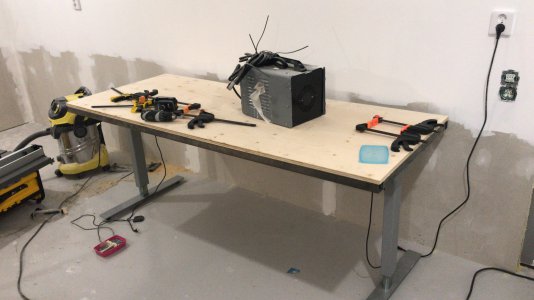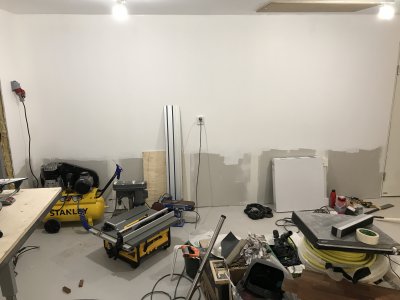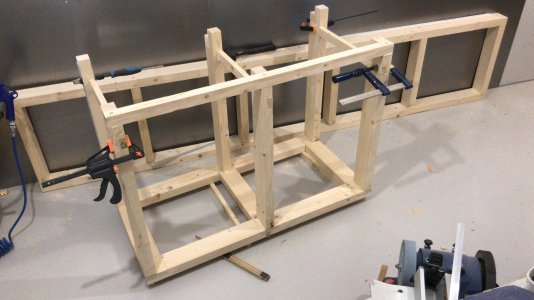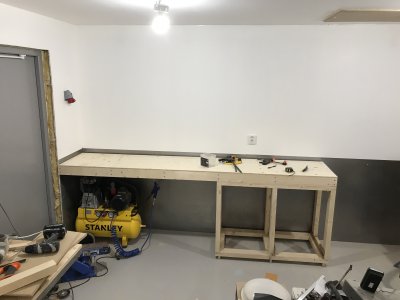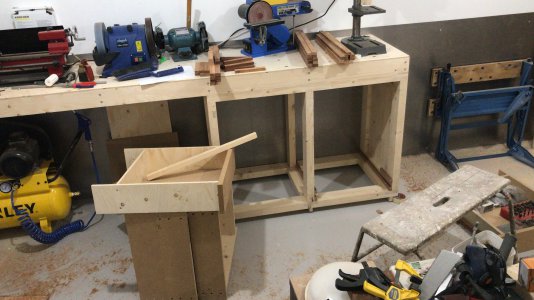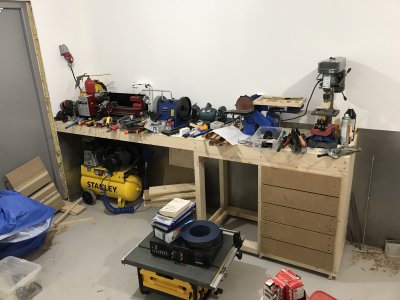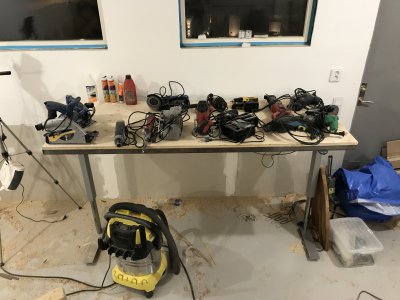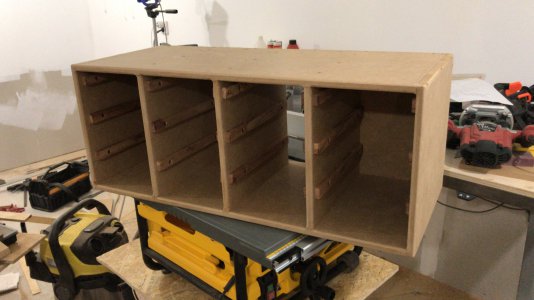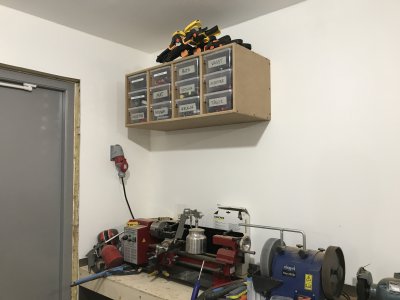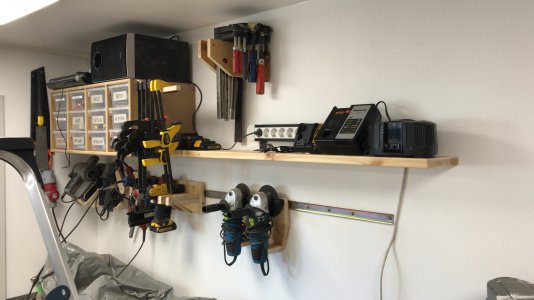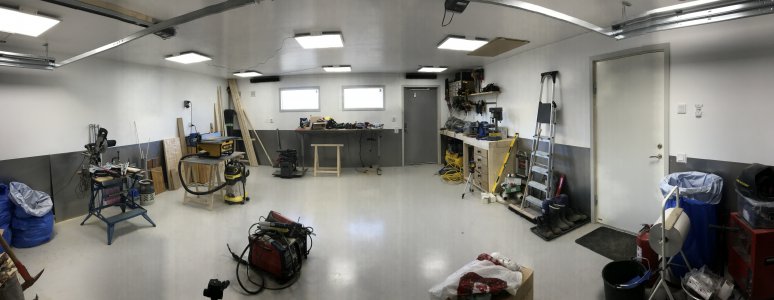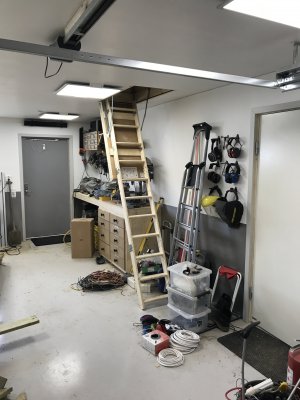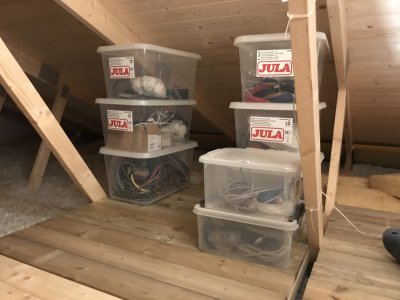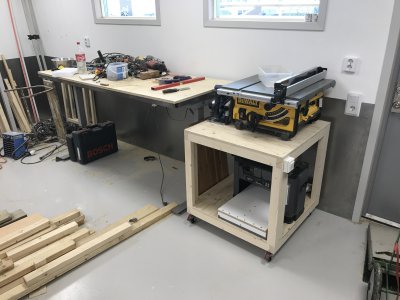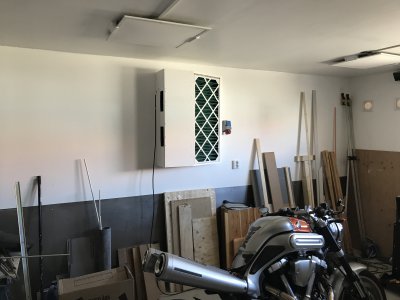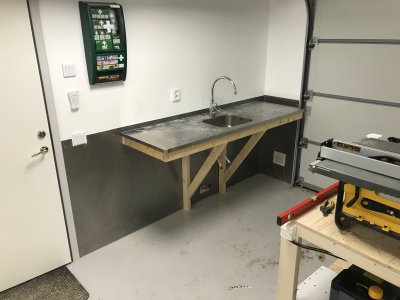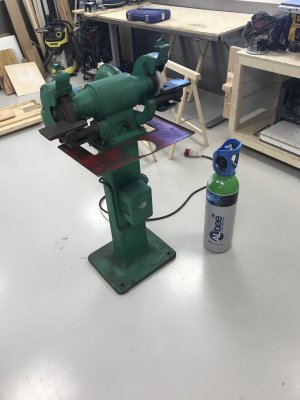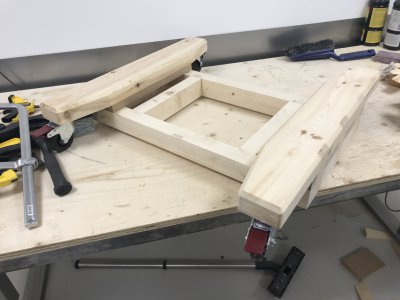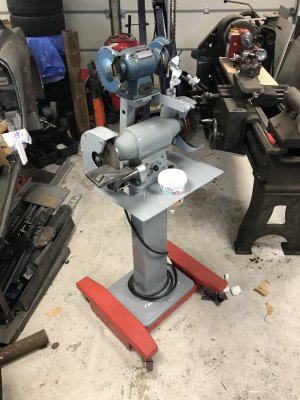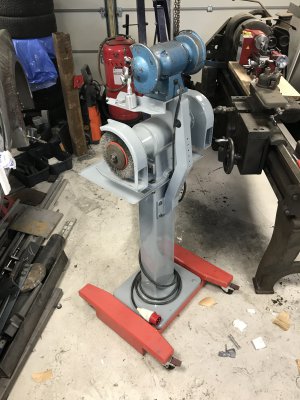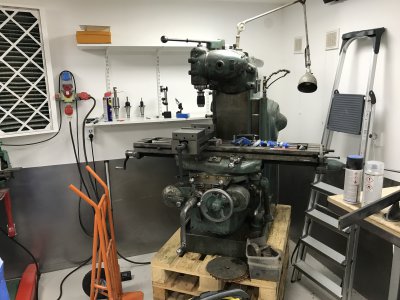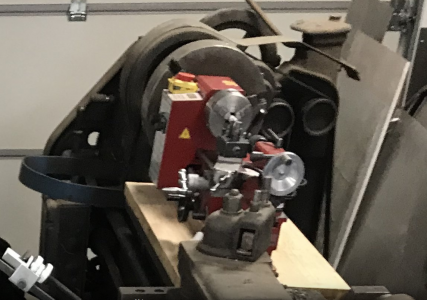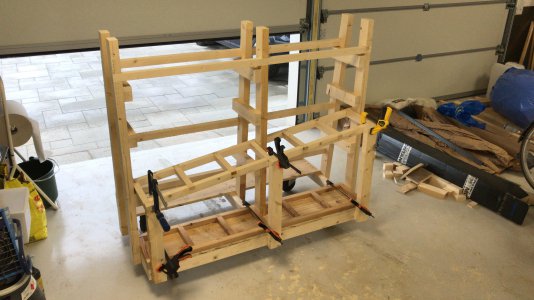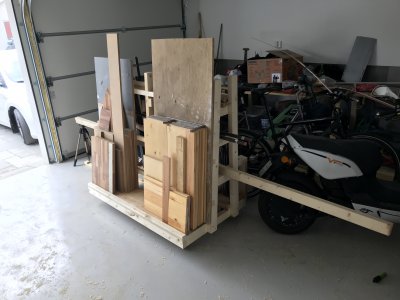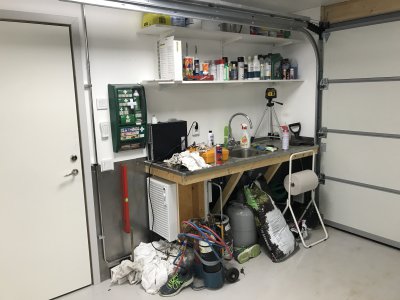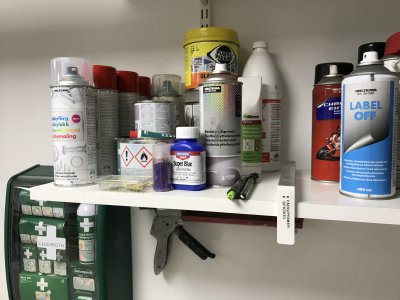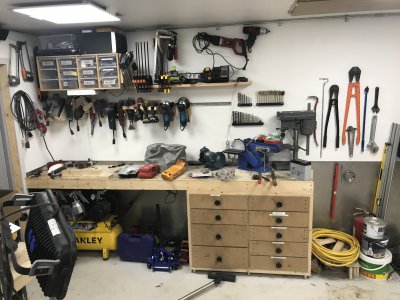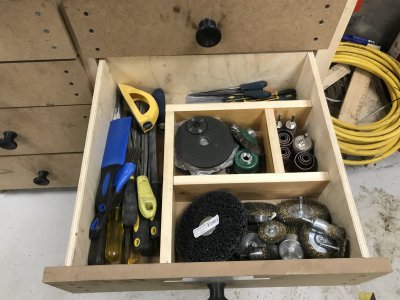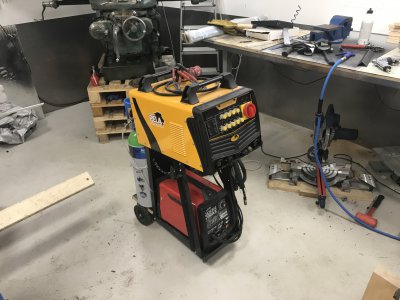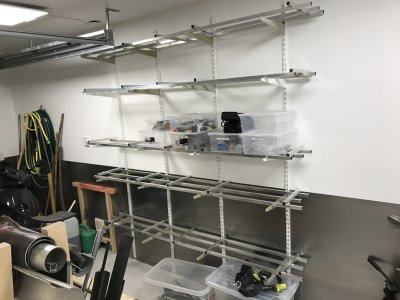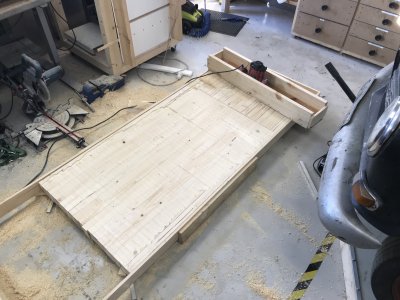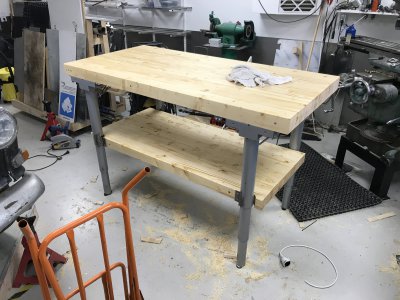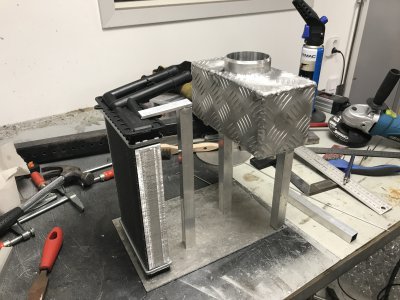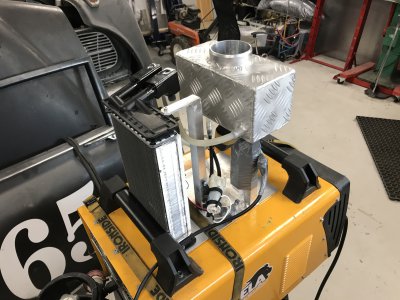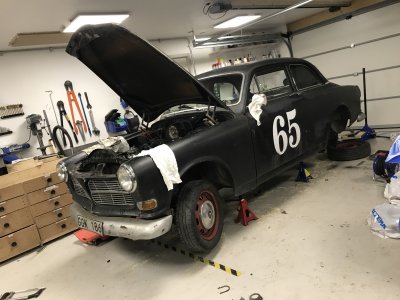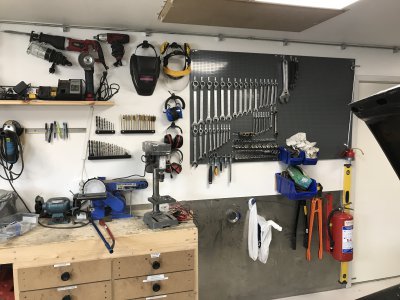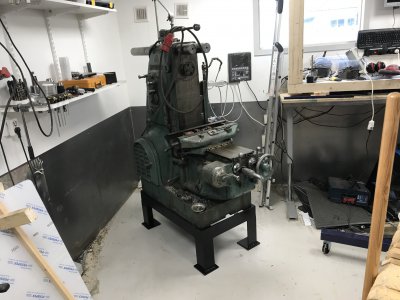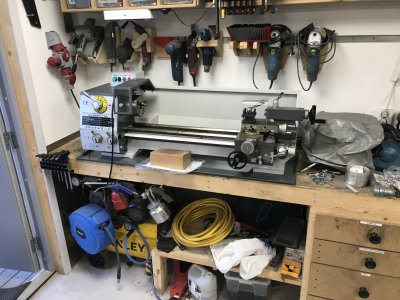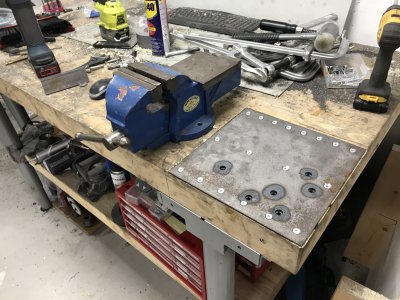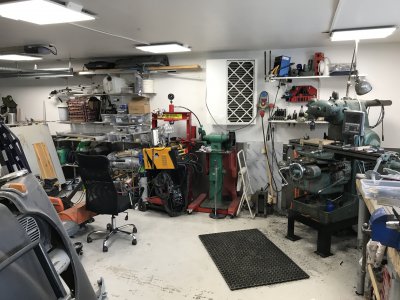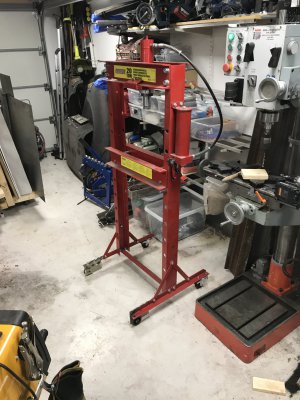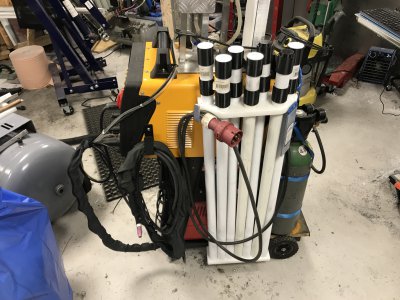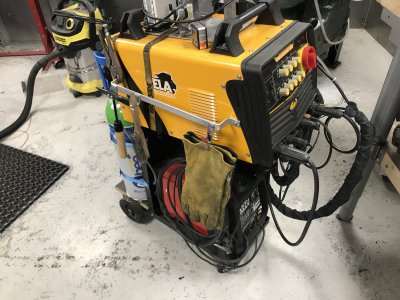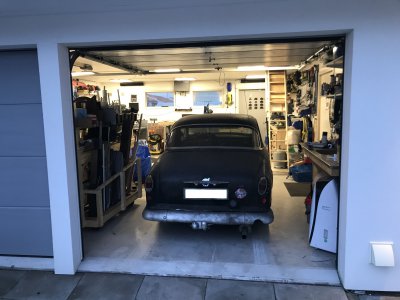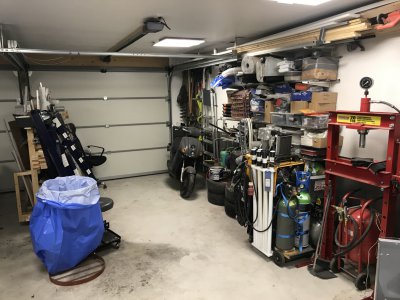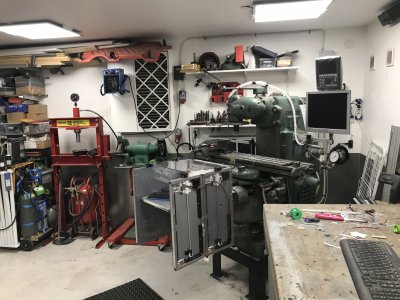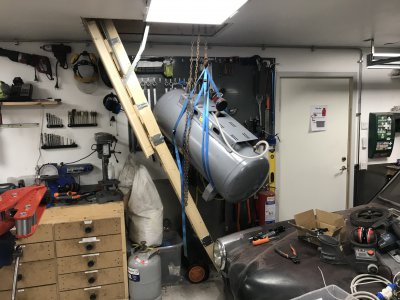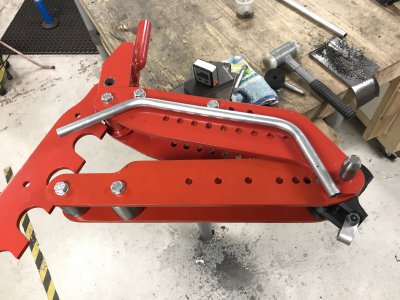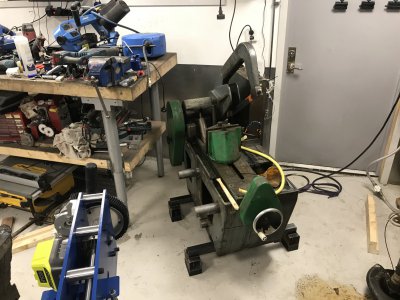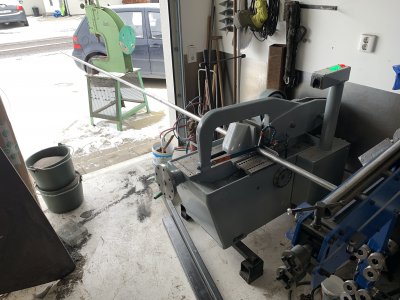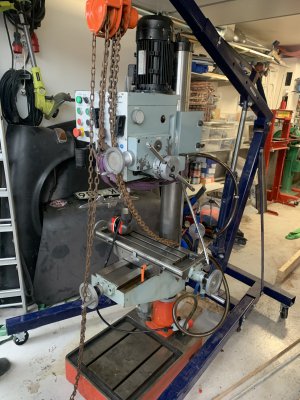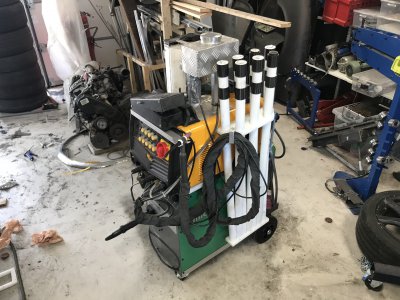- Joined
- Nov 7, 2019
- Messages
- 433
I felt like taking a trip down memory lane so I'm going to try and document my journey as a hobby-machinist which has been one long project on it's own. 
I've always been interested in making things so when we could finally afford moving to a house back in 2017 I aimed to make my dream come true in the 2 car garage.
The garage was delivered "as-is" so fixing the walls was a priority, but I figured painting the floors would be easier before I did that.
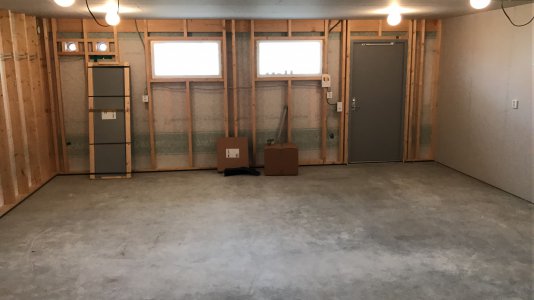
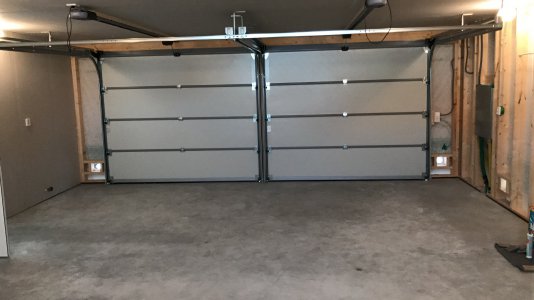 '
'
I roughed up the surface with some kind of steel disc and then epoxipainted the entire thing.
If I were to do this again I would've mixed the first layer of epoxi thinner so it gripped the concrete better and then done more/thicker layers after this for a more durable surface.
I even think it would be enough to just empty a bucket of paint on the floor and squeegee it around rather than carefully using a paint roller like I did.
After using this space for 4 years I've gone through the epoxipaint in some places.
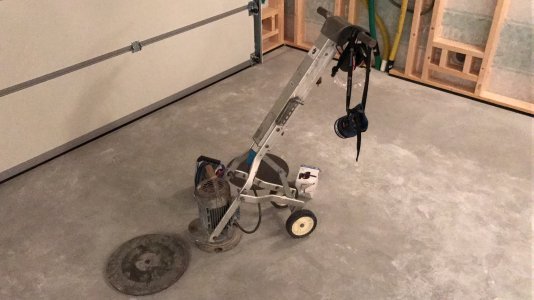
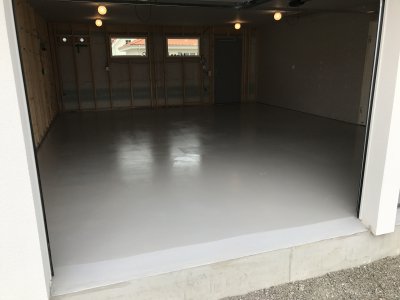
After this came the horrible part, glasfiber insulation.
I didn't use a respirator so I can from experience tell you to WEAR A RESPIRATOR.
My lungs and throat itched for weeks, horrible experience.
This first layer of insulation is 90mm / 3.5" thick and then has a layer of plastic to stop moisture from traveling out. The rest of the house is built in a similar fashion so I figured I'd copy the construction.
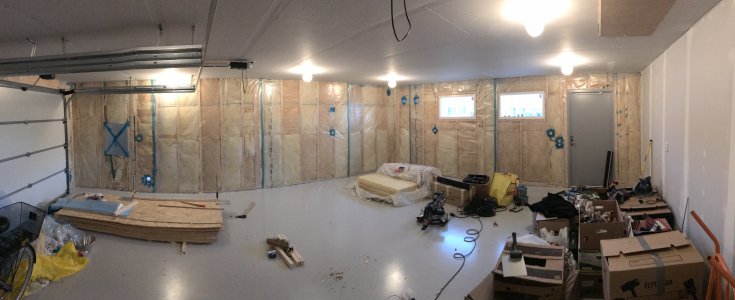
After doing more research I figured I would actually want more insulation than that and added 45mm / ~1 3/4" studs going the other direction from the other studs.
Apparently this helps stop thermal bridges ruining your total insulation efficiency.
You can also see some of my first investments here .. A proper shopvac and miter saw.
4 years later they're both still working well and have many projects behind them!
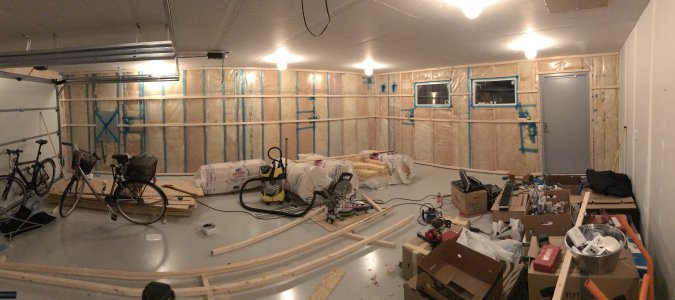
After stuffing all of those pockets full of insulation I started adding sheets of OSB.
Plywood would've been even better but not economically sensible for me.
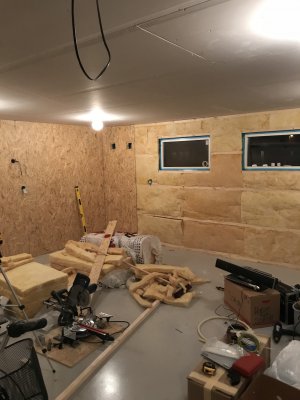
And on to playing with drywall, plasters and sanding.
All of my powertools lined up neatly below the windows.
Budget drill press, budget belt sander, budget tracksaw, budget stick welder my dad gave me and so on.
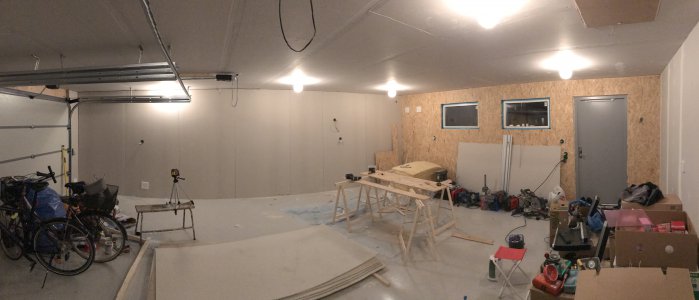
Some paint later and at least the walls are getting there.
Lower half is not painted for a reason I'll get to later.
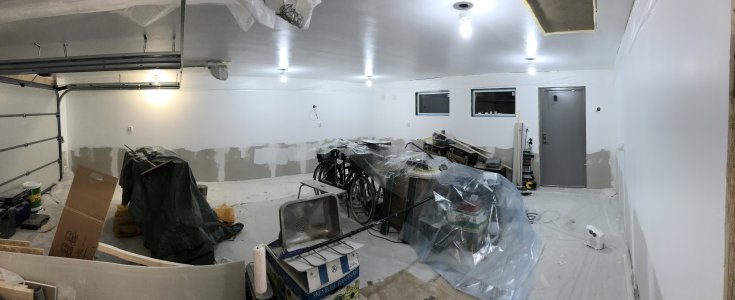
To be continued soon.

I've always been interested in making things so when we could finally afford moving to a house back in 2017 I aimed to make my dream come true in the 2 car garage.
The garage was delivered "as-is" so fixing the walls was a priority, but I figured painting the floors would be easier before I did that.

 '
'I roughed up the surface with some kind of steel disc and then epoxipainted the entire thing.
If I were to do this again I would've mixed the first layer of epoxi thinner so it gripped the concrete better and then done more/thicker layers after this for a more durable surface.
I even think it would be enough to just empty a bucket of paint on the floor and squeegee it around rather than carefully using a paint roller like I did.
After using this space for 4 years I've gone through the epoxipaint in some places.


After this came the horrible part, glasfiber insulation.
I didn't use a respirator so I can from experience tell you to WEAR A RESPIRATOR.
My lungs and throat itched for weeks, horrible experience.
This first layer of insulation is 90mm / 3.5" thick and then has a layer of plastic to stop moisture from traveling out. The rest of the house is built in a similar fashion so I figured I'd copy the construction.

After doing more research I figured I would actually want more insulation than that and added 45mm / ~1 3/4" studs going the other direction from the other studs.
Apparently this helps stop thermal bridges ruining your total insulation efficiency.
You can also see some of my first investments here .. A proper shopvac and miter saw.
4 years later they're both still working well and have many projects behind them!

After stuffing all of those pockets full of insulation I started adding sheets of OSB.
Plywood would've been even better but not economically sensible for me.

And on to playing with drywall, plasters and sanding.
All of my powertools lined up neatly below the windows.

Budget drill press, budget belt sander, budget tracksaw, budget stick welder my dad gave me and so on.


Some paint later and at least the walls are getting there.
Lower half is not painted for a reason I'll get to later.

To be continued soon.


